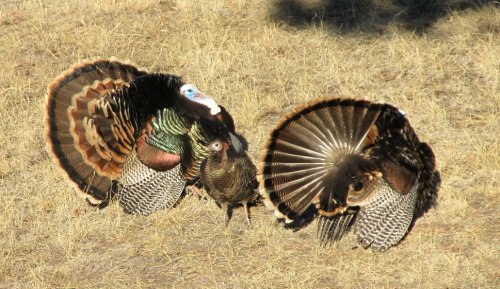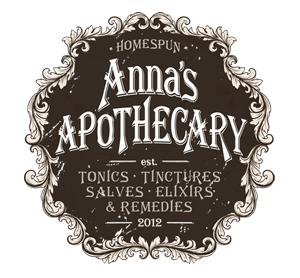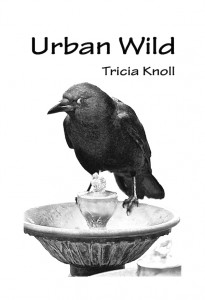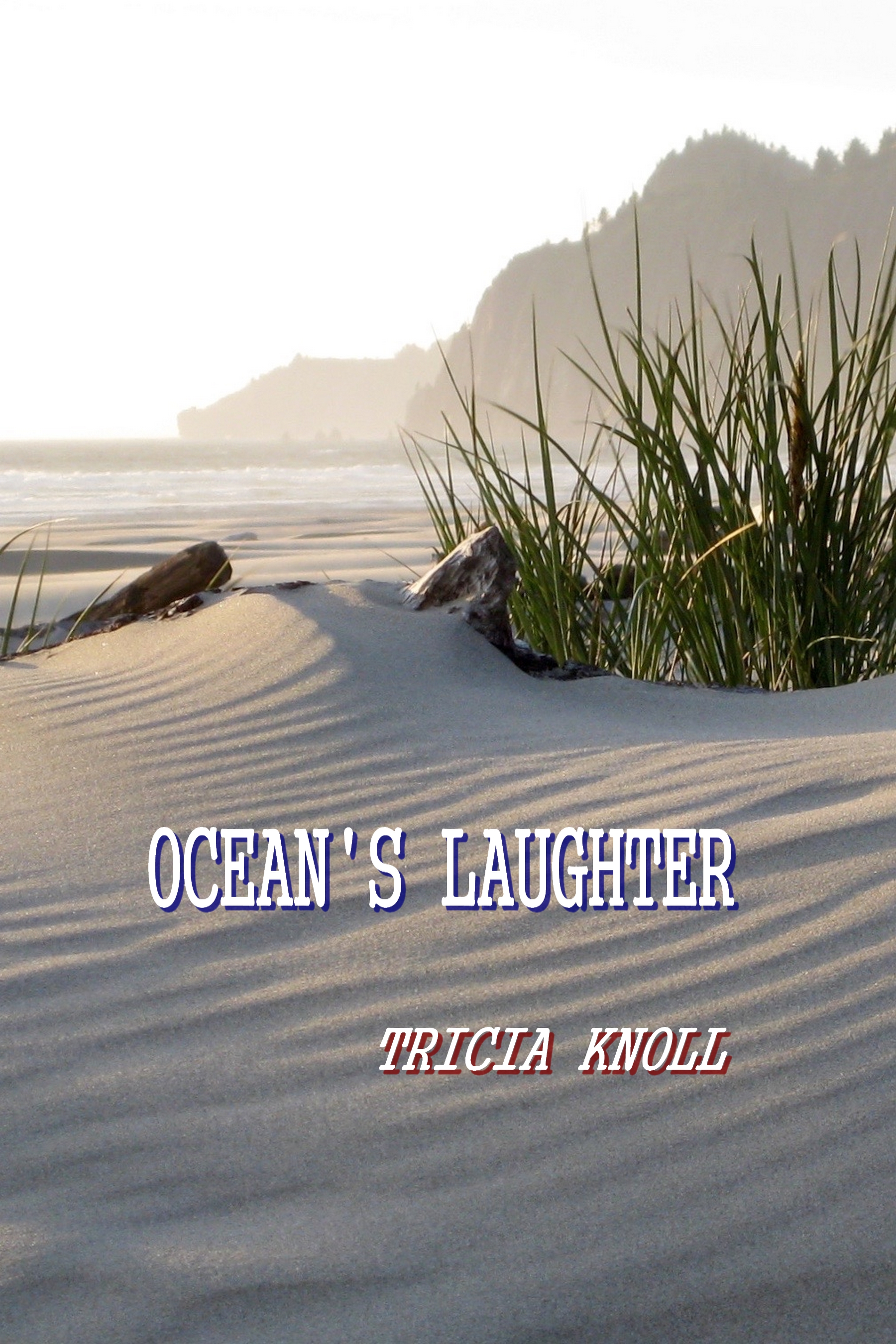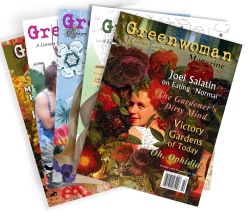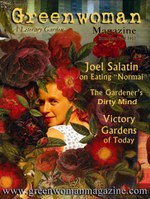- Zora (left) with “Kayley” and Lily with “Julianna”
For the next few weeks I’ll be sharing my very first garden-writing story. It was written over 13 years ago, before the current wave of urban gardening/chicken raising/etc. had taken hold. (I remember talking to someone around this time about our “strange” little project and she had laughed and made a statement that surprised me, “You know, artists always do things ten years before anyone else!”)
I now look upon this sweet time with wonderment and so much love. The little girls in the story are now grown (22 and 19) and their mom and dad have grown up a lot too, in so many ways.
I hope you enjoy it.
—Sandra Knauf
The Chicken Chronicles
As a typical modern American, raising chickens seemed a throw-back to the olden days, kind of like smoking your own hams or pounding your clothes on rocks down by the river. Still, it was my fantasy. I was already an avid, ecology-minded gardener, for three whole years, and it seemed the natural progression of things, going from cultivating plants to raising the animals that could provide their fertilizer. Ah, and what a picturesque fantasy! Chicken manure for the garden, fresh eggs, a sweet little hen house with Martha Stewart charm in my very own urban backyard. It all began to be realized when I became friends with an elderly neighbor lady who raised bantam, or miniature breed, chickens. If she could do it, surely I could.
That winter Grandma Ruby and I hatched a plot. Ruby had two contraband roosters and four hens, and we decided that come spring, when her hens “went broody” and began to “set” (got it in their heads they wanted to become mamas and began to stay on a nest of fertilized eggs) we’d pull a switcheroo. I’d transport the maternal chicken to a shed my husband Andy and I would convert into a hen house, along with a rooster for companionship, and then, in twenty-one short days, Voila!, we’d have adorable, peeping, baby chicks running about. Perfect rustic bliss.
Late spring came and our plan came into action. One evening at dusk, I transported the chickens, in bushel baskets covered with worn bath towels, from Ruby’s house to their recently renovated home. The chicken shack, as I called it, was clean, freshly painted, and nicely scented with pine shaving litter strewn on the newly-poured concrete floor. Around the front, Andy had built a sturdy four-foot-tall wood and wire fence around a small yard. Inside hung an old broomstick for a roost, and a row of three covered nesting boxes. A straw-filled box for the broody hen sat on the floor.
I gently placed the hen’s toasty-warm eggs into the box. Then the birds, already named Deianeira and Hercules by our daughter, seven-year-old Zora, were released. They were handsome chickens, about one-fourth the size of regular ones, with cream-colored heads and golden bodies. Zora and her four-year-old sister Lily watched.
The Lilliputian rooster with long, curved tail feathers strutted his stuff, surveying his surroundings with a quick eye and elegant arrogance that could only come from a genuine cock-of-the-walk.
“He’s a good-looking little guy, isn’t he?” said Andy, smiling. I found this to be encouraging as he had not been thrilled with the scheme. To be honest, he often, though not coming out and actually saying it, left me with the feeling that he thought my idea was ill-conceived at the least and crazy at the most.
The hen, not in a cheerful mood about her abduction and relocation, ignored the egg-filled nest on the floor and flew to one of the wall boxes. That’s okay, I thought, I’ll just put the eggs under her there for now and then move her down to the floor when they’re closer to hatching. Deianeira pecked at me as I tried to gingerly slide the eggs under her. She then let out a screech of a curse and moved in a huff to an adjacent box. I understood perfectly: “I don’t know who you are, but I don’t like you!” After I filled the nest with her eggs she decided she’d get back on them after all. I felt a small cluck of triumph as we closed the door on the coop for the night.
The first dilemma came the next morning. Aware that we were harboring a rooster, I spent most of the night anxious, worrying about the racket he’d make in the morning. Sunrise crowing was not a city value, hence the five hen limit. My husband and I awoke at dawn and looked at each other. Silence. Great, I whispered, maybe he isn’t going to crow at all! Ten minutes later, at exactly 5:20 A.M., Hercules began to announce the day. Now I didn’t know if all bantams sounded like this, but this guy’s crow was scratchy, hoarse, horrible, like someone with laryngitis, “UR…UR…. UR….UR.. Uurrrrr….” It started out strong, then deteriorated to a deathbed gasp. Not like the movies. I closed my eyes. It’s so loud! I thought. Maybe that’ll be it, though.
Andy and I hunkered down in the sheets and listened. Hercules didn’t stop, he sounded the dawn alarm every few minutes, and every time I cringed. We didn’t know what could be done about it (besides murder) so after lying there awhile, wondering if and when it would ever stop, we got up. I made coffee and waited for the neighbors to come over and string us up. So this was what mornings on the farm were like. “I didn’t know it would be so bad,” I said to Andy as I sipped my coffee, wincing at yet another cock-a-doodle-doo.
“I’m telling the neighbors it was your idea and I didn’t have anything to do with it,” replied my chivalrous mate. While we were both newly horrified every few minutes when we heard another fingernails-on-chalkboard salute, after a while we found ourselves grinning sort of perversely at each other at the wickedness we were up to.
Of course I’d decided at 5:20 A.M. that Hercules was history, but I had to wait before sneaking him back to Grandma Ruby’s. We agreed I could bring him back, even though she said her neighbors actually liked hearing the roosters. I wondered at that now. A couple of hours later, after chasing the rooster around trying to catch him, while Andy watched, laughing, and having the little guy get a small wound on his comb in the process (the rooster, that is), I finally cornered him, threw a towel over him, and put him in Ruby’s basket.
I returned to Grandma Ruby’s with the basket on my hip and a guilty heart that I had not only chickened out on keeping the rooster, but had injured the beautiful, obnoxious bird. Ruby only assured me he’d be okay, asked how the hen was doing (fine, still on her nest), and graciously took him back.
Back at home, we commenced waiting for the eggs to hatch. During this time I tried to make friends with the hen. Several times a day I came in meekly, speaking in a soft and friendly tone, practically prostrating myself before the Queen of Eggs. I brought her the mixture of corn, millet and other grains that they sell as scratch, plus a few treats, usually chopped up apples or greens. I tried to pet her. Every single time I came near she gave off outraged chicken vibes and pecked at my hand. She belonged to Grandma Ruby, no one else. She never left the nest in my presence. I never saw her eat. Only once I witnessed her off the nest. I heard the frantic, “BAUK! BAUK! BAUK! BAUWWK!” and raced outside to her rescue. There she was, running around the fenced area, still “bawking,” feathers ruffled. I couldn’t find the source of her terror, and my appearance didn’t calm her any. After a few minutes I shut her back in the coop to quiet her. I worried that she might not return to the nest, but she did.
After twenty-two days, Ruby and I became concerned about the unhappy, solitary (crazed, in my opinion) hen—that she’d spend all that time on her great task, and, as Ruby put it, “not have any babies.” It was becoming clear that it would probably not happen. A few days before, I moved her nest to the floor in preparation for the big event. She became more furious than I imagined possible. She raised her hackles (all the feathers down her neck) and actually looked like a cobra. She began pecking at me vigorously, defending her eggs, and in the process broke one of them. There was no chick in it—just the shrunken, jelled remains of what once had been. I was surprised it didn’t smell bad. The next day, I noticed an egg I accidentally left in the wall box when moving the clutch. I took it outside, nervously opened it, and found it too was empty. Both the hen and I were depressed. She’d failed as a mama and I’d failed as a chicken raiser.
The next day I called a feed store just south of our city. Now nearly July, I felt my time had been invested and I was determined to get chicks–one way or another. I inquired about ordering a couple of day-old bantam Silkies as a back-up plan, in case the hatching did not occur. The feed store lady lent a sympathetic ear as I bemoaned my situation and said she’d call me back with a due date on ordering.
Three days later the phone rang. “Your Silkies are in,” she said.
I caught my breath. “Oh, I didn’t actually order them–I was just asking.” Suddenly everything was happening too fast.
“I placed an order later that day and added a couple of Silkies, in case your eggs didn’t hatch. It’s okay if you don’t want them, someone else will.”
“Wait,” I said, suddenly all aflutter, “I do want them. I’ll be down in a couple of hours.”
My daughters, patiently expecting along with me all this time, were as happy as I was–we were finally going to get chicks! The week before I had shown them a picture of Silkies. They are not your average looking chicken. Originating from the Far East, they were first mentioned by the Italian explorer Marco Polo when he wrote about them during his travels to China in the thirteenth century. Silkies are chickens whose feathers look like fur. You’ve heard of big hair, they have big “fur.” A sister-in-law calls them hippie chickens, but they look more like glam rock to me, the Ziggy Stardusts of chickens. They look this way because normal feathers have barbules along the barbs (the individual branches off a feather) that hold the barbs together, sort of like velcro. Silkies lack these so their barbs go out in all directions, giving the fur effect. So they’re very fluffy, from their feet to their topknots, the feathers atop their heads. They come in black, white, and buff, have unique black-toned skin, and five toes, instead of the usual four. I thought they were very cool. Zora and Lily did not. When I asked if they’d like to have that type of chicken, they exclaimed in unison, “No! Those chickens look weird!” This burst my bubble, temporarily. Later, when I told my mom about their reaction, she said, “Don’t worry. When they see them, they’ll like them. Trust me.”
Once at the warehouse-sized feed store, we were directed to the back where a big stainless steel horse trough held a couple hundred active, peeping chicks. A cornucopia of fluff danced before us–black chicks, white chicks, black and white, black and yellow, yellow, yellow with brown markings. There were bantams, about the size of a fifty-cent piece, and regular sized chicks more than twice that big.
Baby chick acquisition greed swept over me. I quickly rationalized that since we were already there and the chicks cost less than three dollars apiece, it would be ridiculous to leave with just two. I asked the feed store lady if there were “extras.”
Zora, who always astonishes me with her innate sense of style that I know does not come from my side of the family, nor from her father’s as far as I can tell, fell in love at once with two big yellow chicks with brown speckles and stripes. They were full-size Araucanas. Araucanas are a South American breed that used to be advertised in the backs of old issues of Organic Gardening as the “Layers of Colored Easter Eggs.” Martha Stewart raises them for their elegant turquoise blue- and green-shelled eggs. They are chic chicks. We were both disappointed to learn they were spoken for.
We decided to concentrate on bantams. The feed store owner scooped up my two white Silkies, who looked like fluffy white ordinary chicks except for their darker skin, and placed them in a small ventilated cardboard box. After some discussion, we settled on four more—two white and black chicks she called Golden Sebrights, a little black one with a yellow belly, and a yellow one that looked just like the kind you see in all the storybooks, except it had down-covered feet. With the latter two I forgot to ask the breed, and as bantams are too small to “sex” we didn’t know how many would turn out to be hens and how many cockalorums.
On the drive home I felt giddy. The girls were too and it came out in continual arguing over whose turn it was to hold the box. “Please be careful!” I pleaded repeatedly, my eyes darting to the rear view mirror. Amid the mania, I silently hoped that the mother hen would accept them so I wouldn’t have to take care of them.
At home again we went to the girl’s playroom, formerly a small sleeping porch on the back of the house. A cardboard box with a sixty watt light clamped onto one side for heat would be the chicks’ temporary home. We gave them food and water. Since I read it was best to wait until dusk to try to sneak them under the hen, we had a few more hours to enjoy them. Over this time we played hostesses to everyone we could find who might be interested in seeing them—our next door neighbors, the eleven-year-olds playing across the street, and a classmate of Zora’s and her mother who happened by walking their dog. I figured if the hen accepted them we wouldn’t be allowed close contact, so we indulged to the fullest.
At dusk I cuddled a Sebright chick next to me and took it into the hen house. The hen eyed me with her usual dislike. As I nervously slipped the fully alert chick under her she reacted immediately. But it was not with innate love towards a new life. Instead she turned and began pecking vigorously at the chick—at its head. I screamed in horror and grabbed him. She screamed. We screamed in unison. For several seconds, chaos reigned in the darkened coop. The whole scene would have been highly comical if it wasn’t so heartbreaking.
The next day Grandma Ruby told me I should have taken some of her eggs away first, but by then it was too late. There was no way I’d try again and risk getting one of the chicks killed. I’d already decided to raise them myself and she could hatch hers, if she had any, and we’d deal with it that way. After a few more days, though, I felt certain it wasn’t going to happen with the hen. After telling Ruby I thought it best to bring her back, that I was pretty sure the eggs were not going to hatch, she agreed and asked me to first put them into a pan full of water to make sure. If they floated there were no chicks. They all floated.
With a heavy heart I returned the hen to Ruby. She had wanted me to keep her, as a gift, as a sort of living bond between the two of us in our mutual hobby. She wanted to share with us the sight of a mother hen being trailed by a group of rowdy little peepers. “I don’t know why I like chickens so much,” she’d declared on several occasions. Once she confided that her husband, who passed away seventeen years earlier, didn’t share her fondness, and never wanted her to raise chickens. “After he died,” she said, a determined expression settling over her beautifully wizened face, “one of the first things I did was buy some chickens.”
(To be continued . . .)











